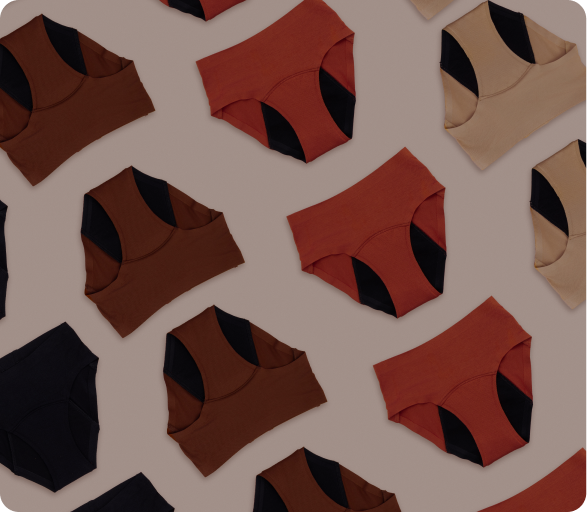When it comes to childbirth, we often talk about contractions, labour pain, and the arrival of the baby. But what follows in the days and weeks after delivery is a lesser-known reality called lochia—a normal, healthy, and often messy part of postpartum recovery that doesn’t get enough attention.
This blog covers everything you need to know: what lochia is, how it evolves, how it's different from your period, what it may smell like, and how it ties into serious conditions like postpartum hemorrhage (PPH).
What Is Lochia?
Lochia is the vaginal discharge your body sheds after childbirth. It contains blood, mucus, and uterine tissue, and is part of the body’s natural process of healing and cleaning out the uterus. Regardless of whether you have a vaginal delivery or a C-section, lochia occurs and it’s your body’s way of saying, “I’m recovering.”
It typically starts right after birth and can last anywhere from 4 to 6 weeks, sometimes longer.
What Are The Three Stages Of Postpartum?
The postpartum period is typically divided into three phases:
- Acute Phase (first 24 hours): Highest risk for complications like hemorrhage.
- Subacute Phase (up to 6 weeks): Most of the physical healing occurs here. Lochia is part of this phase.
- Delayed Phase (up to 6 months): Emotional and hormonal recalibration, including menstruation resuming for some.
Lochia belongs squarely in the subacute phase. It’s one of the most visible signs that your uterus is shrinking back to pre-pregnancy size (a process called involution).
What Are The Stages Of Lochia?
Lochia comes in stages each marked by a change in colour, texture, and flow:
- Lochia Rubra (Days 1 - 4): Bright red, heavy flow, sometimes with small clots. This stage is the most intense and may feel like a very heavy period.
- Lochia Serosa (Days 5 - 10): Thinner, pinkish-brown discharge. Blood flow starts to taper off, and the mucus content increases.
- Lochia Alba (Days 10 - 28 or beyond): Yellowish-white, creamy discharge. This is mostly made up of white blood cells and mucus. The amount reduces gradually.
If you notice sudden increases in flow, return of bright red blood, or foul smell after it has started tapering, it may be a sign to consult a doctor.
What Is The Difference Between Lochia And Postpartum Period?
It’s easy to confuse lochia with your first postpartum period, but they’re different. Here’s how:
- Lochia begins immediately after birth, while your period only returns once ovulation resumes.
- Lochia includes blood, mucus, and uterine tissue; a period is mostly blood.
- Lochia lasts several weeks and gradually tapers off; your period typically lasts 3–7 days.
- Lochia happens regardless of breastfeeding; periods may be delayed if you’re exclusively breastfeeding.
Knowing the difference helps you track your healing and identify any red flags more confidently.
What Are The 6 Ways PPH (Postpartum Hemorrhage) Is Tested?
Lochia is not the same as postpartum hemorrhage (PPH), though both involve bleeding. PPH is excessive bleeding after delivery and can be life-threatening. Here are six ways clinicians assess it:
- Visual Estimation: Often inaccurate but still commonly used.
- Gravimetric Method: Weighing blood-soaked items to quantify blood loss.
- Calibrated Drapes: Graduated collection tools used in delivery rooms.
- Hemoglobin/Hematocrit Testing: Monitors drop in red blood cells.
- Vital Signs: Tracking pulse and blood pressure for shock symptoms.
- Clinical Signs: Dizziness, pallor, shortness of breath, or confusion.
Persistent heavy bleeding after delivery, especially if accompanied by large clots or lightheadedness, should not be dismissed as “just lochia.”
How To Deal With Lochia And The Smell?
Lochia has a distinctive smell; earthy, metallic, and slightly musty. It shouldn’t smell fishy or foul. Here’s how to manage it:
- Use maternity pads, not tampons or menstrual cups, especially in the early weeks.
- Change pads frequently to prevent infection.
- Rinse gently with warm water or use a peri bottle after using the toilet.
- Choose breathable cotton underwear to stay dry and reduce irritation.
- If you notice foul odor, greenish discharge, or fever, seek medical advice.
Recovery Tips: Supporting Your Body Through Lochia
Beyond managing discharge, postpartum recovery is about rest, nourishment, and patience. Here are a few things that help:
- Take It Slow: Bed rest is important, but light walking helps with circulation and healing.
- Nourish Yourself: Focus on iron-rich foods (like leafy greens, jaggery, and lentils) to rebuild blood loss and support healing.
- Stay Hydrated: It helps your body flush toxins, regulate milk supply, and support hormone balance.
- Accept Help: Whether it's meals, laundry, or holding the baby, say yes when someone offers.
- Mental Health Matters: If you're feeling anxious, low, or just overwhelmed, talk to someone. Lochia may be physical, but the postpartum experience is deeply emotional too.
One Last Thing
Lochia isn’t a problem to fix, it’s your body’s way of healing. Let’s talk about it more, not less. Let’s normalise stained sheets, messy pads, and slow mornings. If there’s one thing every new mother deserves, it’s space—space to bleed, recover, and be human.
















